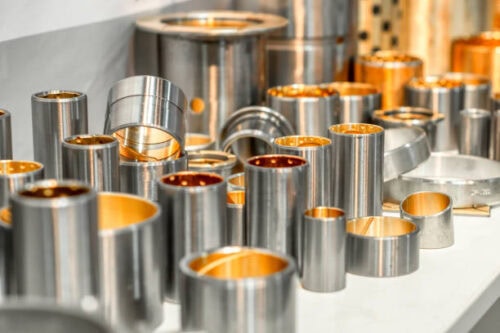Self-Lubricating Bearings: The Silent Revolution Transforming Industries
Comments Off on Self-Lubricating Bearings: The Silent Revolution Transforming IndustriesSelf-lubricating bearings are quietly transforming industries worldwide, offering unparalleled benefits such as reduced maintenance, enhanced reliability, and improved sustainability. But how exactly do they work, and why are they increasingly becoming the go-to choice for engineers across various sectors?
In this comprehensive guide, we’ll explore the mechanics of self-lubricating bearings, their cutting-edge materials, diverse applications, and their significant impact on the future of engineering. Whether you’re an industry professional or a curious reader, this deep dive will leave you informed and inspired. Feel free to also explore findings from Nasa’s research center.
1. The Mechanics of Self-Lubricating Bearings
At their core, self-lubricating bearings are engineered to reduce friction and wear without requiring external lubrication. This is achieved through an innovative internal system that ensures consistent performance.
The Science Behind It
- Porous Materials: These bearings are often made from sintered bronze, composites, or advanced polymers, which contain microscopic pores filled with lubricant.
- Heat and Pressure Activation: During operation, friction generates heat, causing the lubricant to seep from the pores, creating a thin film that minimizes wear and reduces friction.
Key Benefits
- Enhanced Performance: Reliable operation even in high-load or high-temperature environments.
- Longer Lifespan: Reduced wear means these bearings often outlast their traditional counterparts.
- Maintenance-Free: No need for routine lubrication, saving time and resources.
2. Advanced Materials and Their Role
The materials used in self-lubricating bearings are pivotal to their performance, dictating their load capacity, temperature tolerance, and suitability for specific applications.
Material Breakdown
- Bronze Bearings: Infused with oil, these are ideal for heavy-duty operations and extreme temperatures.
- Polymer Bearings: Lightweight and corrosion-resistant, perfect for applications in wet or chemically aggressive environments.
- Metal-Polymer Composites: These combine the strength of metals with the low-friction properties of polymers, offering versatile solutions.
Cutting-Edge Innovations
Modern advancements have pushed the boundaries of material science. For instance:
- Bearings capable of withstanding temperatures up to 500°F.
- High-strength composites designed for aerospace and defense, enduring extreme pressures and harsh conditions.
3. Applications That Push the Limits
Self-lubricating bearings thrive in challenging environments where traditional lubrication systems often fail. Let’s explore their applications across various industries.
Automotive
- Usage: Found in steering systems, suspension, and transmission components.
- Benefits: Maintenance-free operation enhances reliability and reduces overall vehicle weight.
Aerospace
- Usage: Lightweight bearings are used in landing gear and control systems.
- Benefits: Lower fuel consumption and the ability to withstand extreme temperatures and pressures.
Food Processing
- Usage: Employed in conveyors and mixers.
- Benefits: Made from FDA-approved materials, they ensure safety and hygiene.
Medical Devices
- Usage: Found in surgical instruments and diagnostic equipment.
- Benefits: Silent operation and zero maintenance requirements make them indispensable.
Pro Insight:
Industries are continuously discovering new applications, leveraging the adaptability and efficiency of self-lubricating bearings.
4. The Long-Term Benefits of Self-Lubricating Bearings
Switching to self-lubricating bearings is more than just an operational upgrade; it’s a strategic move with long-term advantages.
Cost Savings
- Eliminate the need for lubrication systems, reducing upfront and ongoing expenses.
- Lower maintenance costs and downtime.
Environmental Impact
- Reduced dependency on oil-based lubricants.
- Less waste and lower carbon footprint contribute to sustainability goals.
Enhanced Reliability
- Consistent performance under varying conditions reduces the risk of equipment failure.
- Increased uptime translates to better productivity and profitability.
Sustainability Spotlight
Industries are leveraging self-lubricating bearings to meet stringent environmental regulations without compromising performance or efficiency.
Conclusion: The Future of Engineering
Self-lubricating bearings represent a technological breakthrough that saves time, money, and resources while delivering unmatched reliability. As industries push the boundaries of innovation, these bearings will continue to play a critical role in achieving efficiency and sustainability.
Discover how Bunting Bearings’ wide range of self-lubricating solutions can enhance your next project. Contact us today for tailored recommendations and industry-leading products.




